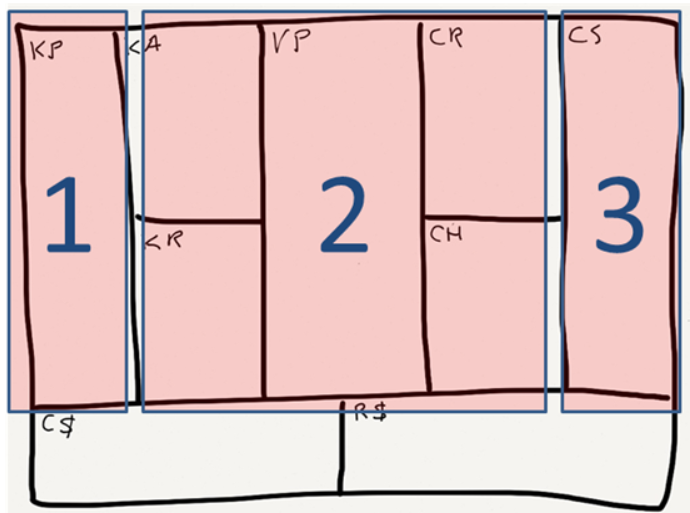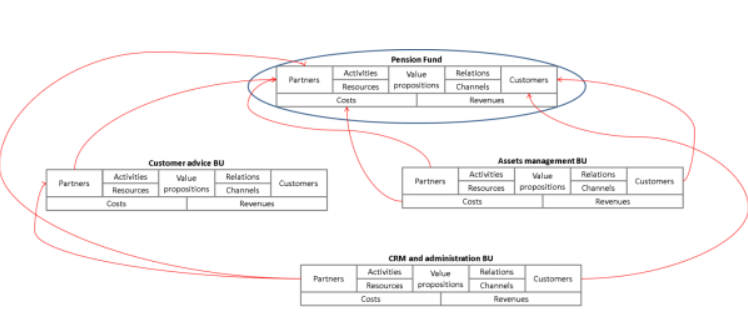In an earlier blog post, we addressed 7 applications of the Business Model Canvas. Sure, we can agree that the Business Model Canvas is very useful for establishing, evaluating and reinventing businesses. But we should do more than highlight the countless possibilities of it for a single enterprise. We need to synthesize our understanding of Value Chains and Business Models and look for next level of analysis: Value Networks.
In this blog, we will highlight a less addressed aspect from the Business Model Canvas that is rooted in Value Network thinking. There are multiple methods and even tools that support the analysis of Value Networks which is regarded as the collaborations, interactions, and exchanges between business actors. You might have heard or read about STOF and e3-value. But apart from academic research, Value Networks are less represented in practical settings today. Why? Because of the rapidly increasing complexity of Value Networks – we can lose track when we think about relations between multiple actors who are involved in our business such as suppliers, customers, governments, partners and NGO’s. Therefore in this blog we will explain how the simplicity of Business Model Canvas can be used to highlight Value Networks. We discuss an external network approach as well as a more internally oriented network approach.
The network is the challenge
Imagine a pension fund with three business units – one for asset management, one for customer advice and a third one for customer relationship management and administration – that attempts to broaden its service offerings. We can use the Business Model Canvas to guide this effort. First, we establish the pension fund’s current Business Model Canvas. Then we formulate our goal – which is to broaden the current service offerings. Step by step we elaborate desired Business Model Canvases that include different new service offerings. Finally we select the most feasible Business Model Canvas for implementation. Business as usual – except that until now we have limited ourselves to only the Business Model Canvas of the pension fund.

Three main elements of the business model canvas: key partners, enterprise and customers
Although external elements such as key partners (1) and customers (3) are included in the Business Model Canvas, at the end of the story the emphasis is on the business model of a single enterprise (2). It seems that key partners are just there to be included in our Business Model Canvas. We also take customers for granted. The main goal is to reach our customers, provide them with our value proposition, and get paid.
Today more than ever, an isolated view on an organization is not feasible. We are not suggesting that the Business Model Canvas only provides an isolated view. Instead, we want to add some additional support to the Business Model Canvas to broaden and deepen its application from the perspective of Value Networks. This support comes in the form of a Networked and an Aggregated Business Model Canvas.
The chained network approach
Let’s think about the pension fund example again. In addition to the single enterprise view of the Business Model Canvas we should also consider the canvases of our partners and customers for broadening our service offerings. That way we will be able to highlight the interactions of the pension fund and its actors for the sake of the pension fund and its actors –so basically focusing on the Value Network instead of a single company in order to retrieve additional insights that might not be highlighted through a single Business Model Canvas.

Consider the canvases of our partners and customers for broadening our service offerings
By representing the Value Network through Networked Business Model Canvases, we could answer new questions like: How can we broaden our service offerings through the current Value Network? What improvements can we implement? Does the entire Value Network benefit from newly offered services of the pension fund?
Now we are able to involve our partners as well and benefit as a group from the applications of the Business Model Canvas by:Considering the potential improvement for all value network actors;
The aggregated network approach
In addition to a networked Business Model Canvas we can also establish an aggregated Business Model Canvas for the pension fund. Think about the individual business units that are part of the pension fund. While customers may perceive the pension fund as one entity, business units could be independent in terms of their financial performances. Each business unit operates independently and is responsible for own results and achievements. However, because all business units are part of the same pensions fund, they might be using each other’s assets, serve similar customers and share similar partners. Actually a customer could be advised by one business unit on his savings and investment plans, while the same investments could be managed by the assets management business unit. Along the process the customer wants to experience being served consistently by one organization – the pension fund – instead of separate business units. Providing such consistency is obviously important for the pension fund and its business units. But how can they start addressing related issues? And all business units have other internal and external customers as well….
That is when the aggregated Business Model Canvas comes into play. First we need to establish the individual Business Model Canvases of the pension fund and its business units. Then we need to examine the relations between building blocks across the network by connecting the Business Model Canvases.

The aggregated business Model Canvas answers even more questions
Again this allows us to answer additional questions like: How can we improve our corporate business model? Is each business unit aligned properly with the corporate organization? What similar partners are used by the different business units? Do we collaborate sufficiently to provide consistent service quality to our customers? Where are the opportunities for synergy?
Now we are able to understand our internal model and consider our business models as complementary parts of the same aggregated model. Benefits of applying this internal network approach are:
Conclusions and advice for applying business model networks in practice
Supported by the alternative application suggestions of het Business Model Canvas discussed above, we recommend you to:
Whether the additional Business Models concern internal or external customers and partners, in both cases you will benefit from the insights – you will improve your understanding of your own business model as well as the business models of your stakeholders and together you will be able to identify improvement opportunities in your value network. At the end of the day no business operates on its own. Every organization has to collaborate to different extents with multiple actors. Trends that are already here to stay, and trends that should be on your agenda today, all underline the importance of collaboration and require insight in your network. Supply chain management, co-creation, open innovation, knowledge sharing, social enterprise, big-data, predictive analytics.
“Understanding your business model is only a first step in understanding your value network.”